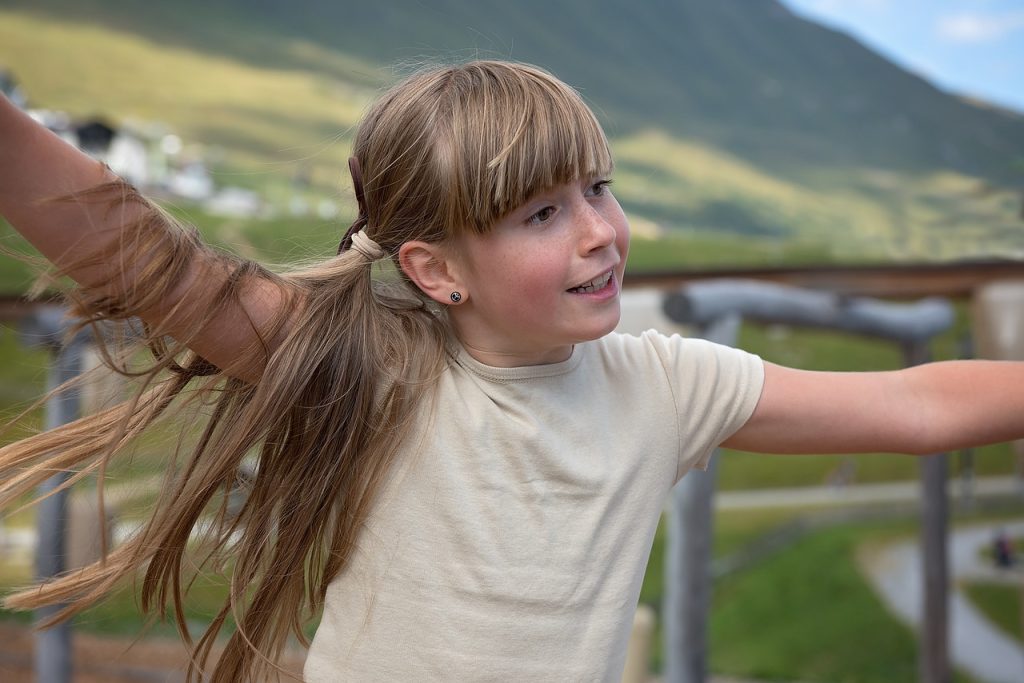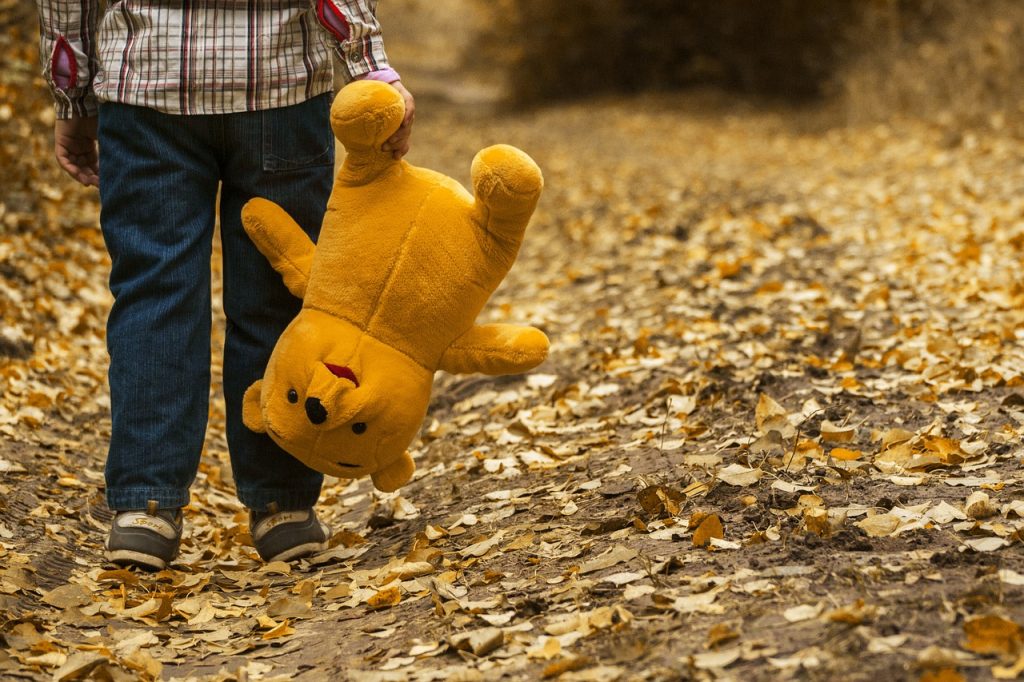Erik Erikson (1902-1994) was a psychoanalyst who was particularly interested in the way that a child’s personality develops. He divided development into 8 ‘ages’ or stages that children need to progress through to become self-fulfilled adults. Like many other theorists Erikson defined each stage by a conflict that need to be resolved. Erikson’s theory focuses on conflict between a positive and a negative emotion and lasted from birth right through to the end of life. His theory also put society and a person’s relationships with others at the centre of their development.
Tag: child development
Child development: Piaget
Jean Piaget (1896-1902) focused on a child’s cognitive development and was the first psychologist to study cognitive development closely. He used the term Schema to explain how a child learns to understand the world around them. What a child does influences how they think about the world, and the new information they gain from redoing the activity changes how they think, modifying or extending the schema. Development is a process of reorganising these schemas and allowing a child to progress to the next stage of development.
When a child is in a state of equilibrium their schemata can explain the world around them. Children have to have assimilate, or gather, information about the world to explain what is happening around them according to their existing schemata. As they experience new things they cannot explain using their existing schemata Piaget felt they were in disequilibrium and needed to modify their schemata to create equilibrium, a leap in development. The process of modifying schemata and finding equilibrium is called accommodation.
Child development: Freud
One of the first child development theorists was Sigmund Freud (1856-1939). Freud believed that all children had innate, basic aggressive and sexual desires, and the way that parents and other adults dealt with these desires would determine a child’s personality when they were grown up.
According to Freud babies are born with a selfish ‘ID’ which only cares about gratification of selfish urges. Later a child develops an ‘EGO’ as they learn that not all of their wants and desires can be fulfilled. The Ego is more realistic than the Id but still self-centred. Last to develop is the ‘SUPER-EGO’ which works with the Ego to control the Id and represents moral values. The Super-Ego is capable of acting altruistically and suppressing the desires of the Id and Ego which are self-serving.
Tummy time
‘Tummy time’ can be a daunting prospect. It’s drummed into parents and childcare professionals alike that babies must sleep on their backs and that leaving an infant on their front is risky. But eqaully tummy time is vital to help babies develop strong neck and back muscles from the start and to prevent flat spots which can develop when too much time is spent lying on their back.
The concept of tummy time is simple. You pop baby on their front on a playmat or blanket covering a hard surface and allow them to try to lift their head at first, eventually pushing up with their arms and finally onto all fours so they can crawl. In practice many infants dislike tummy time at first and older babies can get frustrated. Tummy time doesn’t need to last for ours, or even minutes, to be effective right at the start. Even 15 seconds once a day gives a newborn the chance to move their head from side to side, and you can build up gradually. It’s often reassuring to keep a hand on their back so even when they can’t see you they still have that comforting contact. If a baby starts to cry or show signs of frustration or distress then it’s a sign that tummy time is over.
As they grow and become aware of their surroundings you can play games while they lie on their tummies. Try shifting position relative to their head and saying their name – they should look around to locate you. Another big hit once they can push themselves up a little is a child-safe mirror propped up in front of them. They will be fascinated by the other baby that they see there. Lie on the floor in front of them and make faces – anything that keeps them amused also gives them time to strengthen those important muscles.
Mix things up by altering the place you put baby down. Change the angle of elevation if you have a firm pillow or nursing cushion – put it under their torso with their arms in front. This can be really good for babies suffering from reflux as it keeps them slightly upright. You can also do very short bursts, for example after blowing a raspberry on their tummy when changing their nappy quickly roll them over to blow a few on their back too.
To encourage a baby to reach out and eventually crawl put a favourite toy just in front of them and allow them to grab it and pull it closer. as they grow place the toy further away as an incentive to get on the move. Crawling can also be easier if you remove unnecessary or constricting clothes before tummy time, just make sure the room is nice and warm.
Tummy time can be done anwhere – inside, upstairs, downstairs, outside on grass or sand – as often and for as long as you like. The most important thing to make it fun and give your baby a chance to develop.
5 ways with pom-poms
Pom-poms are a great tool for promoting all kinds of development. Here are 5 activities you can do with a muffin tray, a small jar or cup, a pair of tweezers or tongs and a load of pom-poms.
Pick them up and drop them. This simple activity for younger children promotes the pincer grip, which is vital for holding a pencil later on. Picking up and dropping the pom-poms promotes hand eye coordination and provides a sensory experience too.

Sort the pom-poms acording to colour. Not only is this promoting fine motor development and hand-eye coordination but it’s also working on matching and colour recognition.
Extend the activity by using tweezers. If you put the pom-poms into a narrow necked jar they won’t be able to get their hand in their to pick the pom-poms up so they’ll need to use tongs or tweezers. The pinching motions strengthens the muscles in the hand and the added challenge will develop problem solving abilities.

Count. It sounds simple but you have a lot of pom-poms so you can at least count to twenty with all of them, count how many of different colours, work on concepts such as more and fewer, and add up by transferring pom-poms from one part of the tray to another. It’s ideal for explaining tens and units if you have different sized pom-poms. The smaller ones are units and when you put the tenth smaller one in you can exchange 10 small pom-poms for a bigger one. Top tip from a primary maths specialist – always start to count from zero. The quantity ‘one’ doesn’t make sense unless there is nothing there in the first place so make it obvious and associate zero with nothing from the start.
Blow them. Pom-poms are light and they roll so get down and blow them in a straight line or round a course you’ve drawn out on paper. As well as encouraging children to fill their lungs this also develops the muscles of the face and jaw which is great for speech development.
Playday, play every day
 Yesterday was Playday 2013, a national celebration of play devoted to encouraging and promoting play for children. This year it was focused on play spaces and playing out in the great outdoors. How many of you played outside yesterday? Did it depend on the weather – too hot, too cold, too sunny, too rainy? Did it depend on whether you had ‘somewhere to go’ to play? Do you have an outdoor playspace near you?
Yesterday was Playday 2013, a national celebration of play devoted to encouraging and promoting play for children. This year it was focused on play spaces and playing out in the great outdoors. How many of you played outside yesterday? Did it depend on the weather – too hot, too cold, too sunny, too rainy? Did it depend on whether you had ‘somewhere to go’ to play? Do you have an outdoor playspace near you?
Children today are often limited to sanitised parks and playgrounds, gardens with lawns and patios, discouraged from grubbing around in the dirt or rolling around on grass, climbing trees or picking flowers. Sometimes nannies (and childminder and parents too!) need to think outside the box a little, and make the most of the flexibility home based care affords.
You can find outdoor play spaces on the Woodland Trust website or via Fields In Trust or get involved in Groundwork’s initiatives in your area.
Once you’re there, what can you do? In a field you can run, jump, turn somersaults or cartwheels or have a wheelbarrow race. In a forest you can play hide and seek, climb a tree, make a den. Near a pond, lake or stream you can hunt for pond life, make a mud pie and lean how to skim stones across the water. On a beach you can paddle, fish for shrimps or crabs, make sandcastles. It doesn’t matter if it’s raining – if it’s warm just wear a t-shirt and shorts and take a towel and a change of clothes because everyone should get soaked through having fun at least once in their life!
And if you need some more ideas, the National Trust has 50 things you absolutely need to do and our Pinterest boards have ideas for outdoor fun, sensory play, games and activities and some practical tips and tricks too!
Play today, play every day!
Separation Anxiety
 Separating from their primary carer is a difficult experience for babies, and their parents too! In this post we look at some of the causes of separation anxiety and strategies to help.
Separating from their primary carer is a difficult experience for babies, and their parents too! In this post we look at some of the causes of separation anxiety and strategies to help.
What is separation anxiety?
Most people equate separation anxiety with crying and clinginess to a familiar adult. Separation anxiety is a natural stage that most children experience for the first time between 7 and 12 months. It’s a perfectly normal reaction to being parted from their primary carer. Unfortunately it also often coincides with a child entering childcare for the first time as a parent goes back to work. By the time a child is 2 years old, separation anxiety should have calmed down, although they may still be anxious or nervous about staying with an unfamiliar adult or in an unfamiliar place the first time it happens. Children (and adults) continue to experience some symptoms of separation anxiety even when they can rationalise what it happening. This can often be seen in parents leaving their child for the first time!
What causes separation anxiety?
Separation anxiety occurs when babies realise that things and people exist even when they can’t be seen. Babies realise that they are alone and feel that there should be someone there, so may cry in the night if they wake and find themselves alone or cry if you leave the room, or they feel anxious when a familiar adult leaves, even if there is someone to look after them.
What can help?
This depends on what is causing the anxiety and the extent you’re prepared to compromise what you do.
If a baby experiences separation anxiety every time you leave the room one option is to take them with you. At some stage they will outgrow their anxiety but this isn’t always practical.
Another strategy is to practice, first by playing peekaboo or hide and seek and then leaving the room and popping back in frequently. Say that you’re going and you’ll be back soon, and don’t worry if you can only manage 10 seconds at first. The most important thing is that you leave and come back.
Children will often experience less separation anxiety if left with another familiar adult so try to balance time spent with Mummy where Daddy leaves and time spent with Daddy and Mummy leaves. A child will feel more secure about the absence of one parent because the other parent is still there. Having other familiar adults – extended family, neighbours or friends – who will stay while you leave, even if it’s just to make a cup of tea, will acclimatise them to being without you without being alone.
At night or nap time do comfort a child but keep visits short and try to avoid lots of interaction. Their separation anxiety is real and distressing for them and they need to know that you are there. If they are unable to fall asleep because they are so distressed try the gradual retreat method where you put them in their cot and sit beside them, gradually moving further and further away until you are out the door. It may take a while and you need to be consistent but it is a gentle way to help them overcome their fear.
Separation anxiety and childcare – some advice for parents.
Children who have only ever been in the care of their parents naturally experience separation anxiety when they enter childcare or school.Children who are used to being around a wide range of familiar adults, for example extended family, are less likely to protest when Mummy or Daddy leaves although they are still likely to experience some separation anxiety. The transition just feels easier because they are accustomed to you leaving and coming back and you are used to leaving them.
It’s important to have a settling in period with a childminder or nursery, or a handover with a new nanny. Build up to a short day by first leaving for short periods, then half days and eventually a full day.
Make sure you always say good-bye when you go, and childcarers should always say good-bye at the end of the day too. Once you have left resist the temptation to pop back and see how they’re doing and then leaving again – this is confusing for children.
Always be positive about your chosen childcare. If your child senses that you are nervous or unsure they will pick up on this and feel unsettled too.



